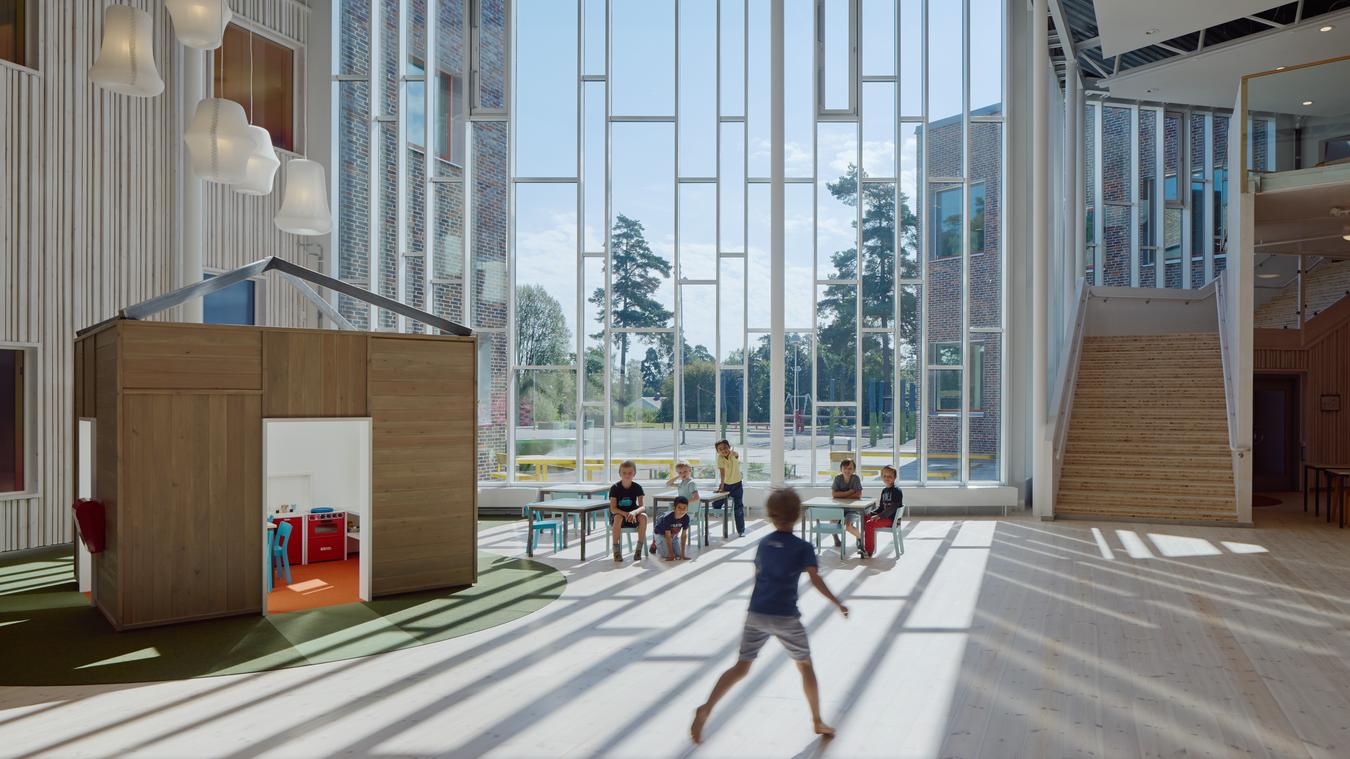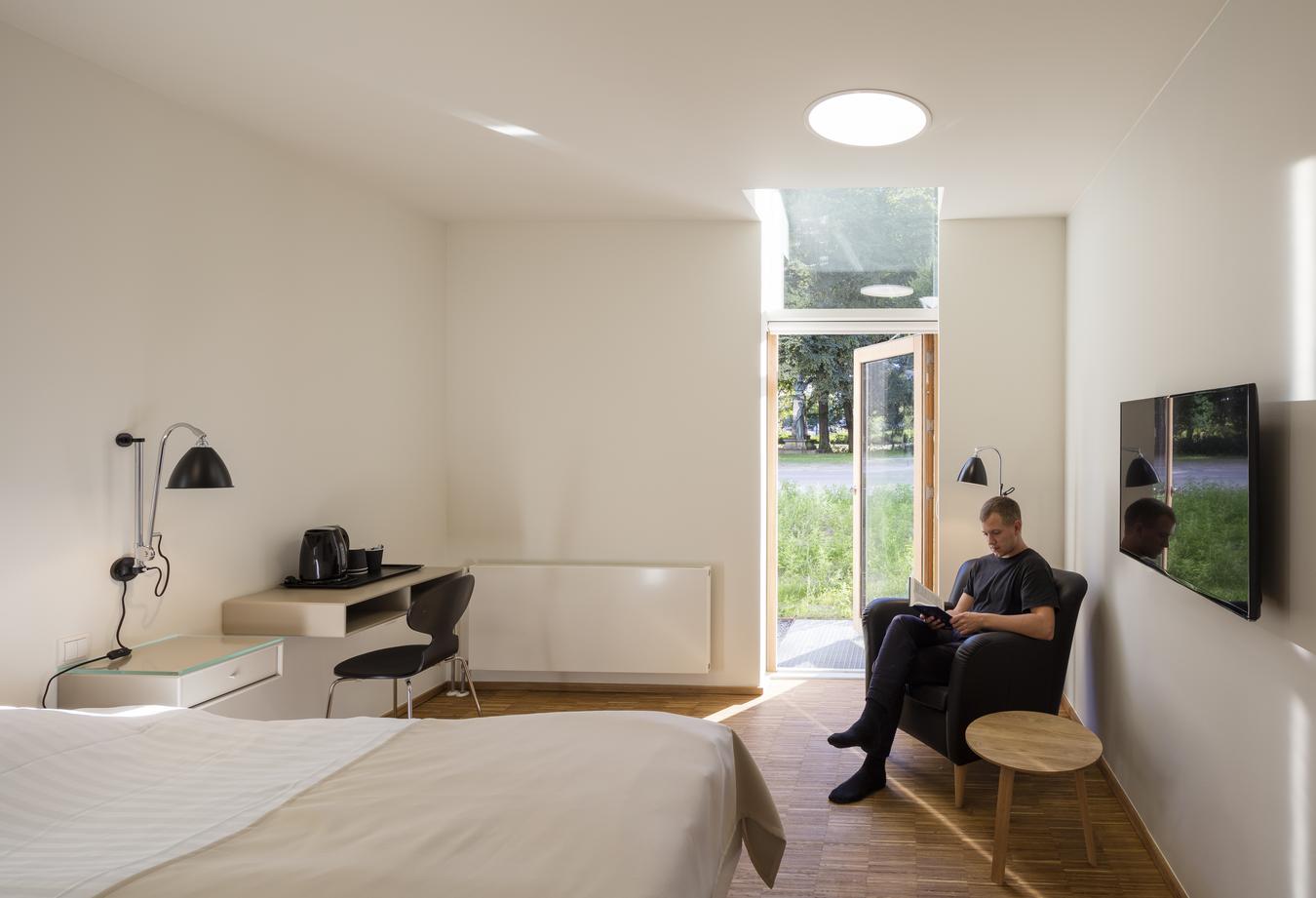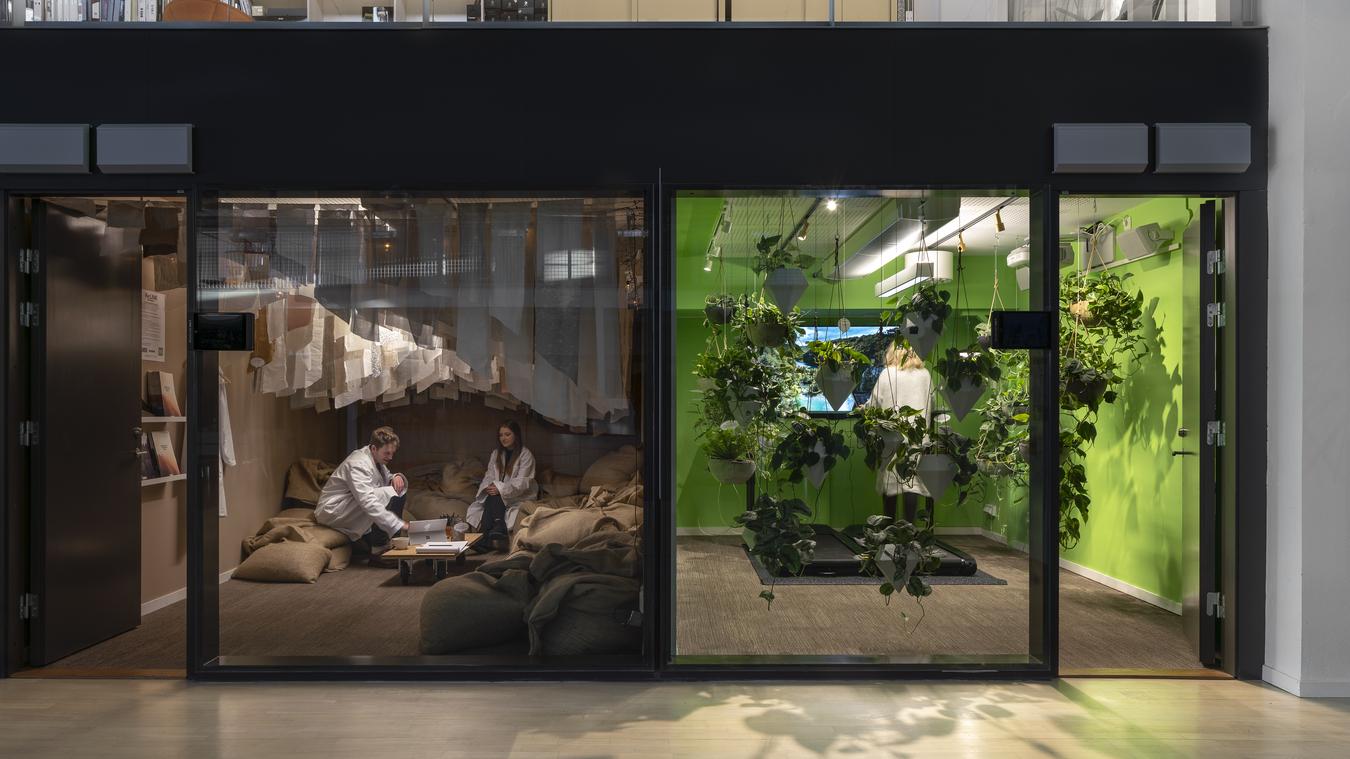Health-promoting environments
The environment affects how we feel, and correctly designed it can make a huge difference to people’s quality of life.

Brinkskolan focuses on sustainability and an educational environment that promotes play and creativity, as well as room for spontaneous meetings and learning. Photo: Åke E.son Lindman
Would you like to invest in health-promoting environments? If so, you can expect many indirect gains:
- You support concentration ability, productivity, recovery and learning.
- You reduce stress, counteract depression and prevent sick leave.
- You increase satisfaction, for example in schools and workplaces.
6 tips to help you get started:
- Exposure to daylight affects people’s mood, sleep, cognitive abilities and performance. The less you are able to be outdoors, the more important it is to have access to daylight from indoors.
- It’s important for us to sometimes be surrounded by natural elements such as greenery and water. Such elements can also purify the air, contribute to a good microclimate, reduce stress and reinforce short-term memory.
- With our perception in focus, we design attractive environments – stimulating and varied on a human scale, and where people can easily see and hear each other.
- Comfortable and ergonomic environments have pleasant and relevant light and sound environments, good working positions, thermal comfort indoors and a good microclimate outdoors.
- Movement is important to health. It should be appealing and fun to move, and green transport should be easy and pleasant.
- We spend a large part of every day indoors. Stipulating healthy, toxin-free materials is self-evident in making buildings good to be in

Rigshospitalet in Copenhagen: Patient rooms with views, natural light and conscious choice of materials contribute to creating a good quality of life. Photo: Adam Mørk
We offer methods, tools and knowledge to create health-promoting environments
- We design environments based on research into recovery, learning etc., using Evidence Based Design.
- Digital calculations mean we can ensure daylight quality, thermal comfort and a good microclimate all year round.
- We create environments that help people to move every day using methods such as the pedestrian and cyclist perspective, nudging and design that encourages play and movement.
- We use ecosystem services to create green environments that promote well-being for both humans and the environment.

ReLINK, experimental meeting rooms at LINK Arkitektur's office that encourages movement and flexible sitting positions. Photo: Jason Strong
